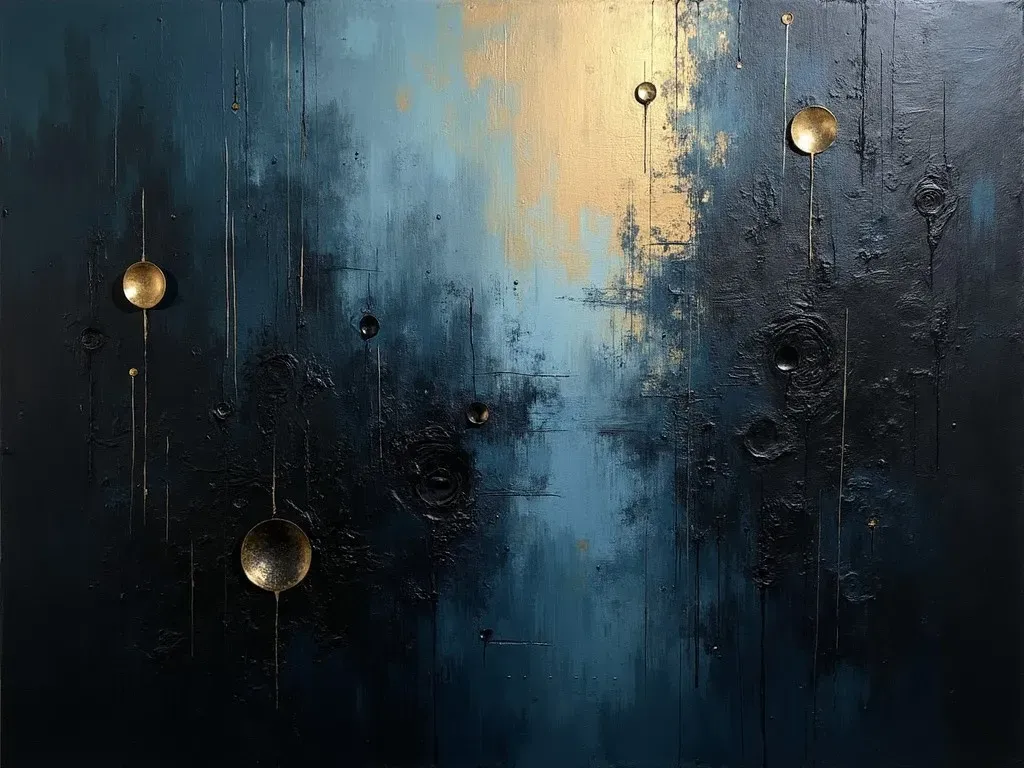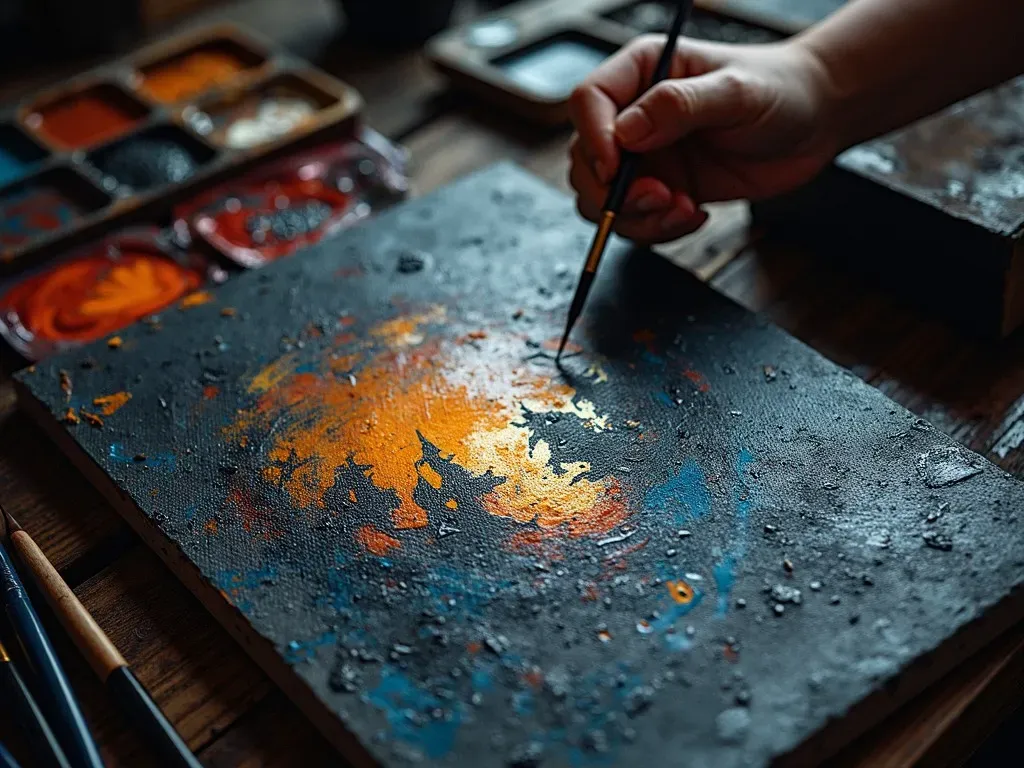Oil painting dark can be an incredibly rewarding technique, allowing artists to explore rich, complex color palettes and invoke deep emotional responses through their work. By understanding how to master dark tones, layers, and textures, artists can create stunning pieces that captivate viewers and showcase their skills.
Understanding the Essence of Dark Oil Painting
Dark oil paintings often utilize a limited palette of deep, rich colors to emphasize shadows and light. This approach can add drama and intensity to artworks, evoking a sense of mystery or melancholy. The choices made in selecting colors and Techniques directly impact the final effect of the piece.
Artists can either start their work by applying dark colors to set the mood or layer lighter colors on top. The choice largely depends on individual style and the desired outcome. When painting dark to light, it is essential to have a well-prepared base that can balance the intensity of the paint being used.
The Foundation of Dark Oil Painting: Base Colors
A common misconception in oil painting is that dark pigments should always be the first choice. However, achieving depth in dark oil paintings relies on the effective use of base colors that complement the work’s overall tone. Some popular base colors used in oil painting dark include:
| Base Color | Description |
|---|---|
| Burnt Umber | A warm, deep brown great for shadows |
| Raw Umber | A cooler, neutral brown for balance |
| Payne’s Grey | A versatile dark blue-gray |
| Dioxazine Purple | A vibrant, deep purple for richness |
Structuring a painting around these base colors creates a foundation that allows darker tones to feel more grounded.
Techniques for Deepening Darkness
When engaging with oil painting dark, a few techniques stand out in enhancing shadow and depth:
- Glazing: This involves adding transparent layers of color over dry paint. Glazing allows an artist to modify the existing hues, giving them greater depth and luminosity.
- Layering: Begin with dark colors, and as the painting evolves, layer lighter hues to create contrast and highlights.
- Impasto: This technique uses thick applications of paint, resulting in texture that can provide depth and interest to the dark areas of the painting.
Complementary Colors to Dark Tones
While dark colors dominate the canvas, employing complementary colors can enhance the overall richness of the painting. For instance:
- Yellow: Bright yellows against deep browns or blacks can create striking contrasts.
- Blues: Pairing dark hues with cooler shades of blue can introduce balance and tranquility.
- Whites: Accents of white or lighter tones can highlight essential features of the artwork.
By understanding complementary relationships, artists can create a dynamic interplay between dark and light that enhances visual interest.
Common Challenges in Dark Oil Painting
Despite its allure, mastering oil painting dark poses several challenges for artists. Among these, an incorrect oil-to-paint ratio can dull the appearance of dark tones. Below are some common challenges and approaches to address them:
| Challenge | Solution |
|---|---|
| Dull Finish | Adjust the oil and solvent content in paint |
| Loss of Detail | Ensure adequate lighting while painting |
| Over-mixing of Dark Colors | Utilize a limited palette to maintain vibrancy |
By anticipating these challenges and preparing accordingly, artists can eliminate frustration and focus on the joys of creation.
Oil Painting Dark: Color Mixing Techniques
Mixing dark colors effectively is crucial to achieving a compelling image:
Dark Color Primer:
Here’s a basic method of mixing colors to create dark shades:
- Start with a base – for instance, Burnt Umber.
- Gradually add a smaller amount of Dioxazine Purple for richness.
- Introduce Rhodes Blue or Black as needed until a desirable depth is achieved.
Tips for Painting Dark to Light
Different approaches can be employed to effectively transition from dark to light within a painting:
- Starting with Dark Backgrounds: Fill the canvas with dark hues, allowing light colors to be introduced later.
- Focus on Values: Ensure a good range of values, paying attention to how dark areas interact with the lighter parts of the artwork.
Begin by sketching the primary composition lightly with charcoal or a thinned color mix, then proceed to fill in dark shadows meticulously.
Famous Dark Paintings: Inspiration for Artists
Studying renowned artworks can provide key insights into the dark oil painting technique. Some famous dark paintings include:
- "The Night Watch" by Rembrandt – A masterclass in contrasting light and shadow.
- "The Nightmare" by Henry Fuseli – An exploration of dream-like darkness and its emotional resonance.
- "The Adoration of the Mystic Lamb" by Jan van Eyck – Showcases intricate use of dark hues to frame the divine light.

FAQs
What are the best colors for dark oil paintings?
The best colors include Burnt Umber, Raw Umber, Payne’s Grey, and Dioxazine Purple, allowing for a rich palette that enhances depth.
How do I prevent my dark oil painting from becoming dull?
Maintain the correct ratio of oil, solvent, and pigment to preserve brightness, and use glazing to enhance the vibrancy of layered colors.
Can I paint dark to light effectively?
Yes, many artists prefer starting with dark backgrounds. Establishing dark areas first creates a striking contrast when introducing lighter colors.
For further exploration, check out this informative piece on How to Go from Dark to Light in Oil Painting.
 oil painting techniques">
oil painting techniques">
By embracing the exploration of dark tones in oil painting, artists can deepen their understanding of color dynamics while enhancing their creative expression. Whether it’s through layering or glazing techniques, the path toward mastering the darker side of oil painting is one of profound artistic discovery.
